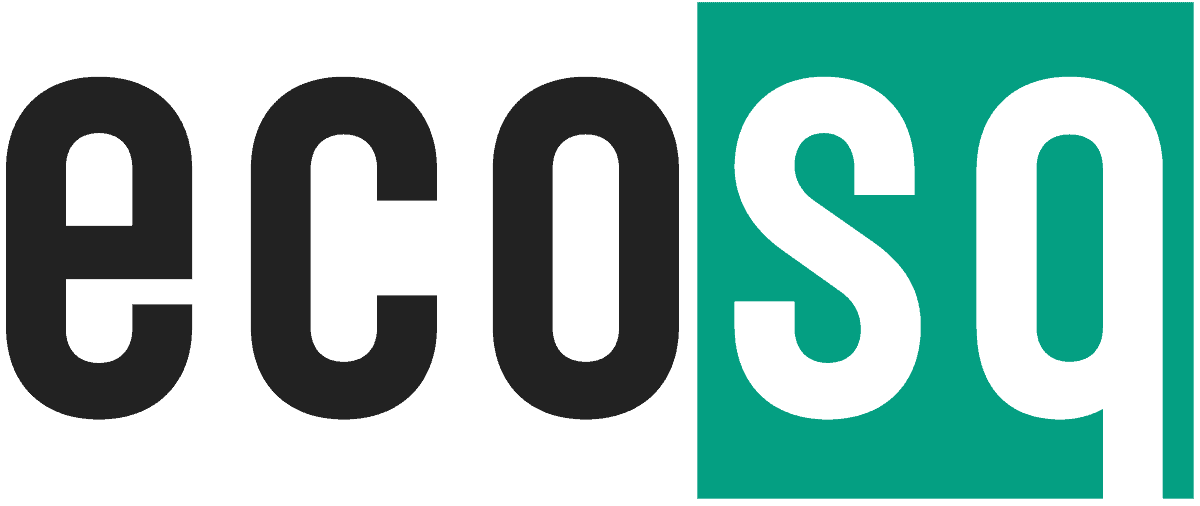Linux for Sustainable Water Treatment: A Comprehensive Guide
This article was previously published in our newsletter. The content may no longer be up to date.
Clean water is essential for life. However, with growing populations and development, our finite freshwater resources face increasing threats from pollution, scarcity and unsustainable usage. Sustainable water treatment practices are crucial to ensure sufficient supplies of clean water for ecosystems, communities and industries.
In this comprehensive guide, we explore how the open-source Linux operating system empowers sustainable water treatment globally.
Why Sustainable Water Treatment Matters
Sustainable water treatment is vital to protect our precious water resources. Here’s why it should be a priority:
Preserving Finite Resources
- Freshwater makes up only 3% of the world’s total water, and only 1% is easily accessible for human use. Groundwater depletion is a huge threat.
- With population growth and development, demand for clean water is rising rapidly. Sustainable treatment preserves supplies.
Safeguarding Ecosystems
- Polluted discharges can damage delicate aquatic ecosystems. Sustainable treatment prevents ecosystem harm.
- Healthy ecosystems then provide clean water filtration services.
Protecting Public Health
- Unsafe water spreads diseases like cholera and typhoid. Proper treatment prevents disease transmission.
- Over 2 million deaths annually stem from unsafe water, sanitation and hygiene.
Supporting Industries
- Many industries rely on clean water availability – agriculture, manufacturing, energy production.
- Sustainable treatment ensures sufficient good-quality supplies.
Managing Scarcity
- Water scarcity already affects over 40% of the global population. Sustainable practices reduce scarcity risks.
- Reusing treated wastewater augments supplies.
How Linux Enables Sustainable Water Treatment
Linux is an open-source operating system used worldwide. Its flexibility makes it ideal for managing complex water treatment operations sustainably.
Flexibility
- Linux is highly customizable for specific treatment needs. Solutions can be tailored.
- Open-source nature allows continuous improvement by collaborators globally.
Real-Time Monitoring
- Linux-based SCADA systems enable precise monitoring of treatment processes.
- Rapid response helps optimize systems and prevent issues.
Data-Driven Optimization
- Tools like R and Python analyze treatment data to identify efficiency opportunities.
- Machine learning improves treatment processes over time.
Remote Control
- With internet connectivity, Linux systems can be controlled and monitored remotely.
- Enables quick responses to events without on-site presence.
Interoperability
- Linux integrates well with industrial control systems and internet-connected devices (Internet of Things).
- Allows consolidation of fragmented systems.
Cybersecurity
- Linux-based systems can be hardened to protect against cyberattacks on critical infrastructure.
- Built-in security features like SELinux enhance protection.
Cost-Effectiveness
- Linux is free and open-source, reducing software licensing costs.
- Efficient processes lower operational costs.
Real-World Applications of Linux in Water Treatment
Linux powers solutions across the water use cycle worldwide:
AquaCrop
- AquaCrop is an open-source tool for optimizing agricultural water use through crop growth modeling and scenario testing.
- Helps farmers plan irrigation efficiently. Developed by the UN’s Food and Agriculture Organization.
Wastewater Treatment
- Linux systems control sequence batch reactors, membrane bioreactors and disinfection at wastewater plants.
- Ensures effluent meets environmental standards before discharge/reuse.
Desalination
- Seawater reverse osmosis desalination facilities rely on Linux for monitoring and optimizing the purification process.
- Helps boost freshwater supplies in water-scarce coastal regions.
Water Distribution
- Linux-based SCADA systems manage pumping, storage tanks and pipe pressure in distribution networks.
- Helps reduce leakage and ensures adequate supplies.
Stormwater Management
- Smart stormwater control systems run on Linux, monitoring rainfall and controlling diversion valves/pumps.
- Prevents urban flooding, pollution.
Water Quality Monitoring
- Remote sensors connected to Linux systems track water quality parameters like pH, turbidity, flow rates.
- Enables rapid response to pollution events or abnormal readings.
Key Components of Linux-Based Water Treatment Systems
Linux serves as a flexible foundation for various components tailored to treatment needs:
SCADA Software
- Centralized software for monitoring and controlling distributed treatment systems in real-time.
- Examples: OpenSCADA, FreeSCADA, OutdoorSCADA.
Historians
- Time-series databases that store process data from sensors and equipment. Enables analysis.
- Examples: InfluxDB, PostgreSQL.
Data Analytics
- Tools like Python and R for statistical analysis, visualization, machine learning on treatment data.
- Drives process optimization.
Edge Devices
- Small Linux-based computers like Raspberry Pi located on remote treatment sites.
- Collects data, controls equipment, transmits to central system.
IIoT Sensors
- Smart Internet of Things sensors monitoring quality/flow/pressure parameters.
- Provides data insights to improve efficiency.
Networking Infrastructure
- Secure network linking treatment sites to centralized control room and cloud servers.
- Enables remote monitoring and control.
Cloud Integration
- APIs and web services to connect Linux systems to cloud platforms.
- Provides scalable and resilient data storage and analytics capabilities.
Implementing Linux for Sustainable Water Treatment
Putting Linux-powered systems into practice involves:
Assessing Needs
- Evaluating existing infrastructure, pain points, sustainability goals.
- Defining monitoring, control and optimization requirements.
Designing Solutions
- Selecting appropriate open-source software like SCADA, analytics tools.
- Planning edge devices, sensors, networking.
Deploying and Integrating
- Installing Linux OS and applications on servers and devices.
- Connecting new systems with existing controls and data sources.
Configuring and Customizing
- Tailoring Linux-based software for specific treatment processes and equipment.
- Building dashboards and control screens for operators.
Staff Training
- Educating employees on using the new Linux-based systems.
- Promoting sustainability best practices across teams.
Continuous Improvement
- Monitoring performance indicators like energy use, water quality metrics.
- Using data insights to further optimize treatment operations over time.
Environmental Benefits of Linux Water Treatment Systems
Adopting Linux-based water treatment brings major environmental advantages:
Optimized Resource Use
- Automatic process control minimizes water, energy and chemical consumption.
- Treatment reuses rather than discharges wastewater.
Reduced Ecosystem Impacts
- Effective treatment removes pollutants before water discharge.
- Lessens damage to delicate aquatic and riparian ecosystems.
Lower Greenhouse Gas Emissions
- Efficient systems reduce fossil fuel-based energy consumption.
- Cutting carbon footprint helps mitigate climate change.
Adaptability to Events
- Real-time monitoring enables rapid response to pollution events or droughts.
- Protects environmental quality even with fluctuating conditions.
Long-Term Sustainability
- Linux solutions make sustainable water use economically viable for communities and industries.
- Ensures water availability and quality for future generations.
Cost Savings with Linux-Based Systems
Beyond ecological benefits, Linux water treatment solutions offer financial advantages:
- Lower Capital Costs: Open-source Linux software eliminates licensing fees for proprietary systems. Lowers hardware needs.
- Reduced Operating Costs: Optimized processes cut water, energy and chemical expenses. Automation lowers labor costs.
- Improved Reliability: Stable Linux systems mean less downtime and maintenance costs. Remote monitoring enables preventative maintenance.
- Scalability: Linux solutions are modular and can scale up as needs grow. Avoid overprovisioning.
- Data Integration: Consolidating data on Linux systems avoids costs of fragmented proprietary software.
- Cloud Economics: Leveraging cloud platforms enabled by Linux provides resilient and affordable data management.
- Future-Proof: Open-source Linux systems can be readily upgraded, avoiding obsolescence issues of proprietary hardware/software.
Implementation Challenges and Solutions
However, Linux water treatment adoption faces some hurdles:
Challenge: Integrating Linux with Legacy Systems
- Solution: Use open protocols like MQTT, REST; build adapters for proprietary APIs.
Challenge: Cybersecurity Risks
- Solution: Harden systems, isolate critical infrastructure, use firewalls and VPNs, monitor actively.
Challenge: requiring Specialized Skills
- Solution: Train staff on Linux basics. Engage experienced integrators where needed.
Challenge: Justifying Costs
- Solution: Highlight long-term OPEX savings, environmental benefits. Start small then scale.
Challenge: Overcoming Organizational Resistance
- Solution: Demonstrate pilots first. Slowly transition systems, keep portions proprietary initially if needed.
Key Takeaways on Linux for Sustainable Water Treatment
In summary, adopting Linux-based solutions enables water utilities and industries to:
- Monitor and optimize treatment processes in real-time for efficiency.
- Leverage automation and data insights to improve sustainability.
- Respond rapidly to pollution events and emergencies remotely.
- Reduce costs through open-source software and optimized operations.
- Safeguard critical infrastructure against cyberthreats.
- Unify data across diverse and legacy treatment systems.
- Scale up modular solutions as needs grow.
With environmental pressures on water resources mounting globally, Linux delivers the adaptive, innovative capabilities needed to transition to sustainable management of our precious water supplies.
Looking Ahead: The Future of Linux in Water Treatment
As technology evolves, Linux for water treatment continues to advance through innovations like:
- Expanding use of edge computing and smart sensors for hyperlocal data.
- Leveraging artificial intelligence to autonomously optimize treatment operations.
- Tighter integration and automation between steps in the water usage cycle.
- Adoption of digital twin technology for virtual modeling of systems.
- Blockchain-based platforms for transparent water tracking.
- Expanding water data standardization and open data access.
However, work remains to overcome adoption barriers and evolve sustainable water governance.
The possibilities are endless when communities and industries come together to leverage Linux as a force for water stewardship. By embracing open-source innovation, we can secure clean abundant water for generations to come.







